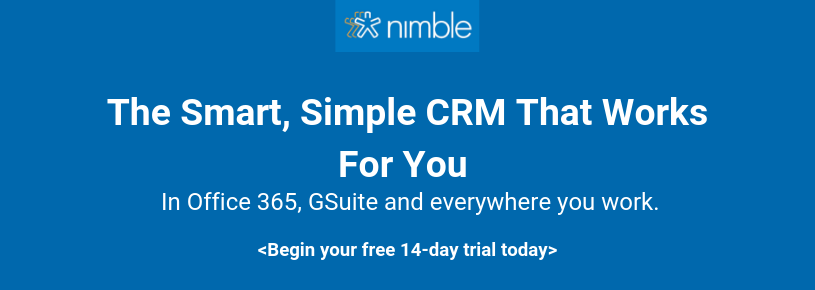A recent study showed that 77% of brands could disappear and nobody would care.
It sounds pretty harsh, like something Regina George from Mean Girls would tell you if she was your business advisor. But, the truth is many brands fail to make meaningful connections with their customers.
Email is the perfect channel to prevent your brand from falling into the Sea of Lost Companies, however. It’s still a powerful tool for forging lasting relationships with customers. In fact, 80% of marketers have reported an increase in email engagement over the last 12 months.
So, here are some ways in which you can use email to enhance and maintain customer relationships:
1. Share Personalized Content
Customers want to see the content that’s most relevant and useful to them. They’re more likely to engage with personalized content; for instance, the right blog posts or personalized recommendations.
Marketing professionals cite increased visitor engagement (55%), improved customer experience (55%) and increased conversion rates (51%) as the top benefits of personalization:
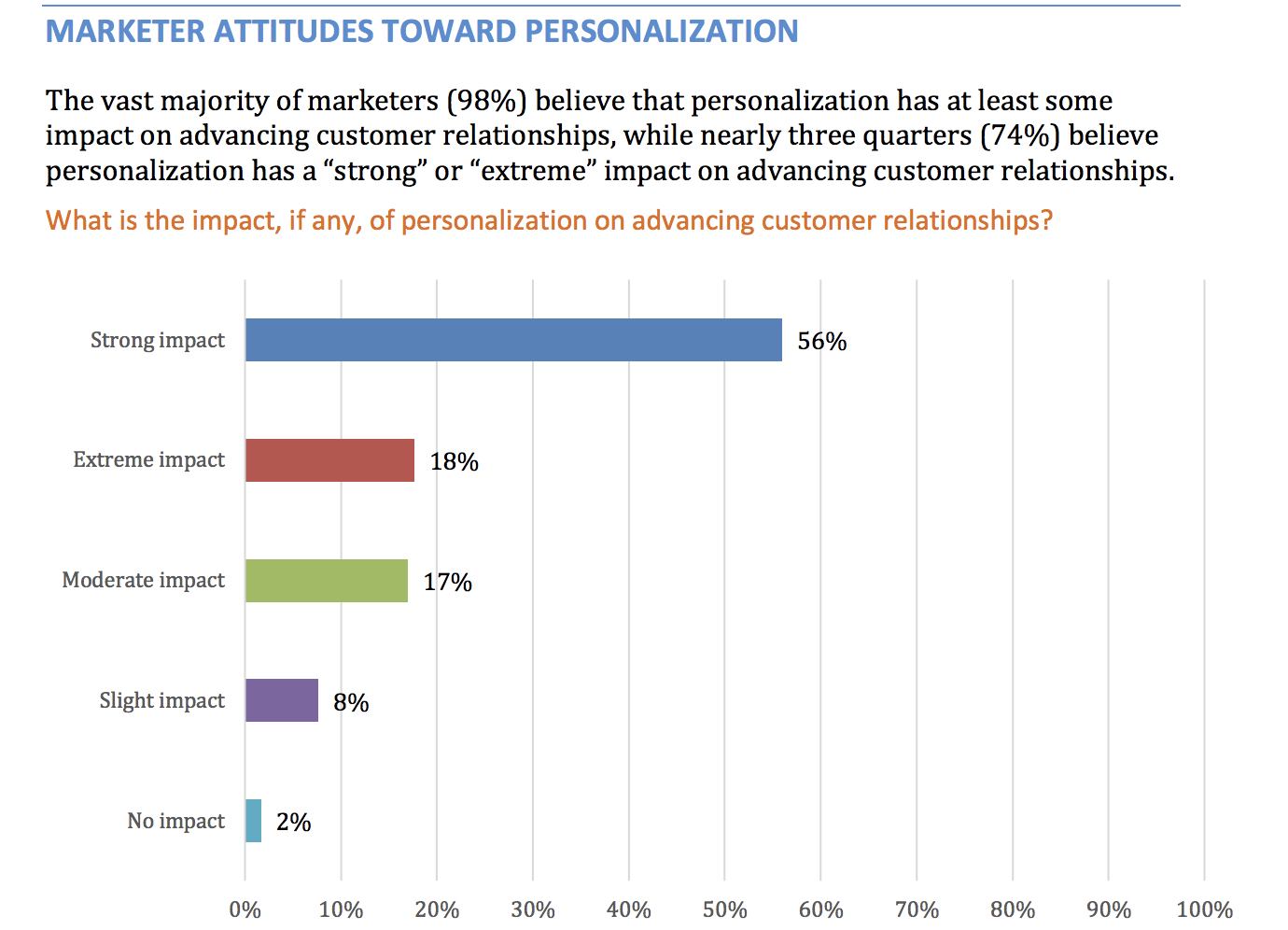
So, email personalization has value for both you and the customer.
To send the most relevant and appealing content to your audience, segment your subscriber list.
Firstly, segment your list according to demographics, e.g. location, age, education, career, etc. The reason being, what resonates with one segment of your audience, may not resonate with another. For example, a freelancer might not be interested in your article about office politics.
You should also create psychographic profiles, looking at your audience’s hobbies, behaviors, interests, and values. This allows you to speak to what your customers truly care about.
Customers will feel more of an affinity with your brand if you share the same interests and attitudes.
Here’s an example of this in action from Ace & Tate:
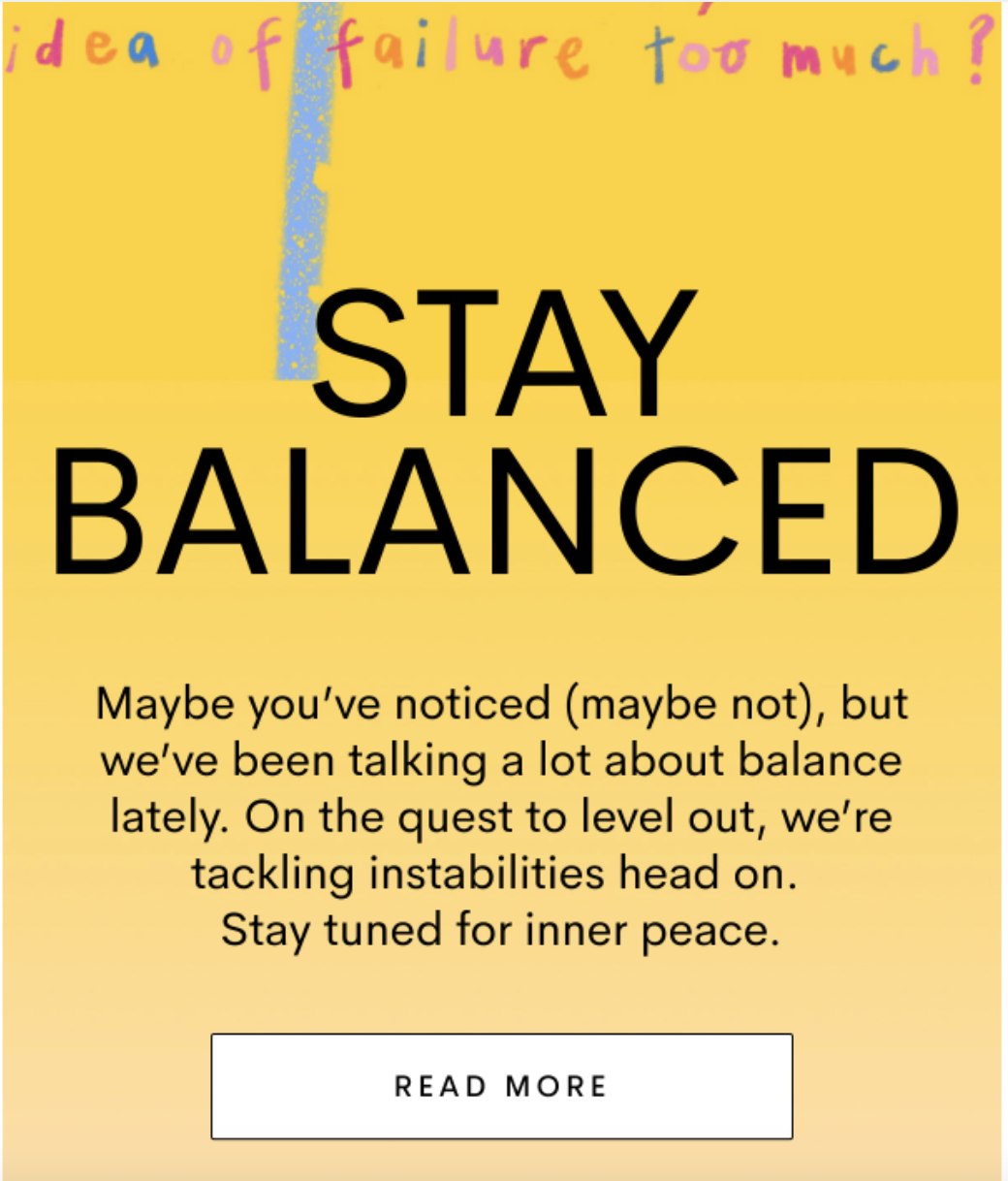
The email contains a curated selection of content on finding peace and overcoming obstacles. It might be a bit too deep and meaningful for some. But, clearly, Ace & Tate’s audience cares about self-love, mental health, and the like.
You can discover demographic and psychographic data about your customers through research methods, such as surveys. Or monitor customer behaviors to see what kind of on-site content they gravitate towards most.
Then, utilize the information you acquire to create personalized emails that reflect your audience’s characteristics and concerns.
2. Send Loyal Customers a Freebie
Customers expect a lot from brands these days. It’s not enough to simply meet their expectations, you have to exceed them.
A great way to delight your customers would be to send them an unsolicited freebie. Sophia Bernazzani at HubSpot says,
“By going above and beyond to create a memorable customer experience—with things like discounts, gifts, promotion, or spontaneous outreach—you can foster an emotional connection and sense of goodwill among customers that will make them more likely to be loyal to your brand long-term.”
Though it seems counterintuitive, handing out freebies encourages customer loyalty and therefore increases lifetime value. Ultimately, you’re more likely to increase revenue than incur losses.
Check out the following example:

Here Amaysim offers customers a free data upgrade because “Why not?” Or so they say… We know your game Amaysim.
It’s a good idea for subscription services, or any service with a renewable contract, to offer freebies here and there in order to retain more customers. It would be particularly sensible to do so just prior to the end of a contract. Or to send a freebie to audience segments that are most likely to churn.
If you sell physical products, your freebie might look a little different. Send loyal customers an offer of a free gift with their next purchase. Or invite customers to claim a free sample based on their purchase history. Somebody who bought your bamboo toothbrush in the past may enjoy a sample of your organic toothpaste, for example.
Such tactics delight customers, and also have an added bonus – they may go on to purchase the product.
3. Celebrate Milestones Together
You should use email to show that you think about customers beyond wanting them to buy from you. They’re more likely to care about your brand if you show that you care about them.
In fact, the number one reason customers say they form an emotional connection with brands is that they care:
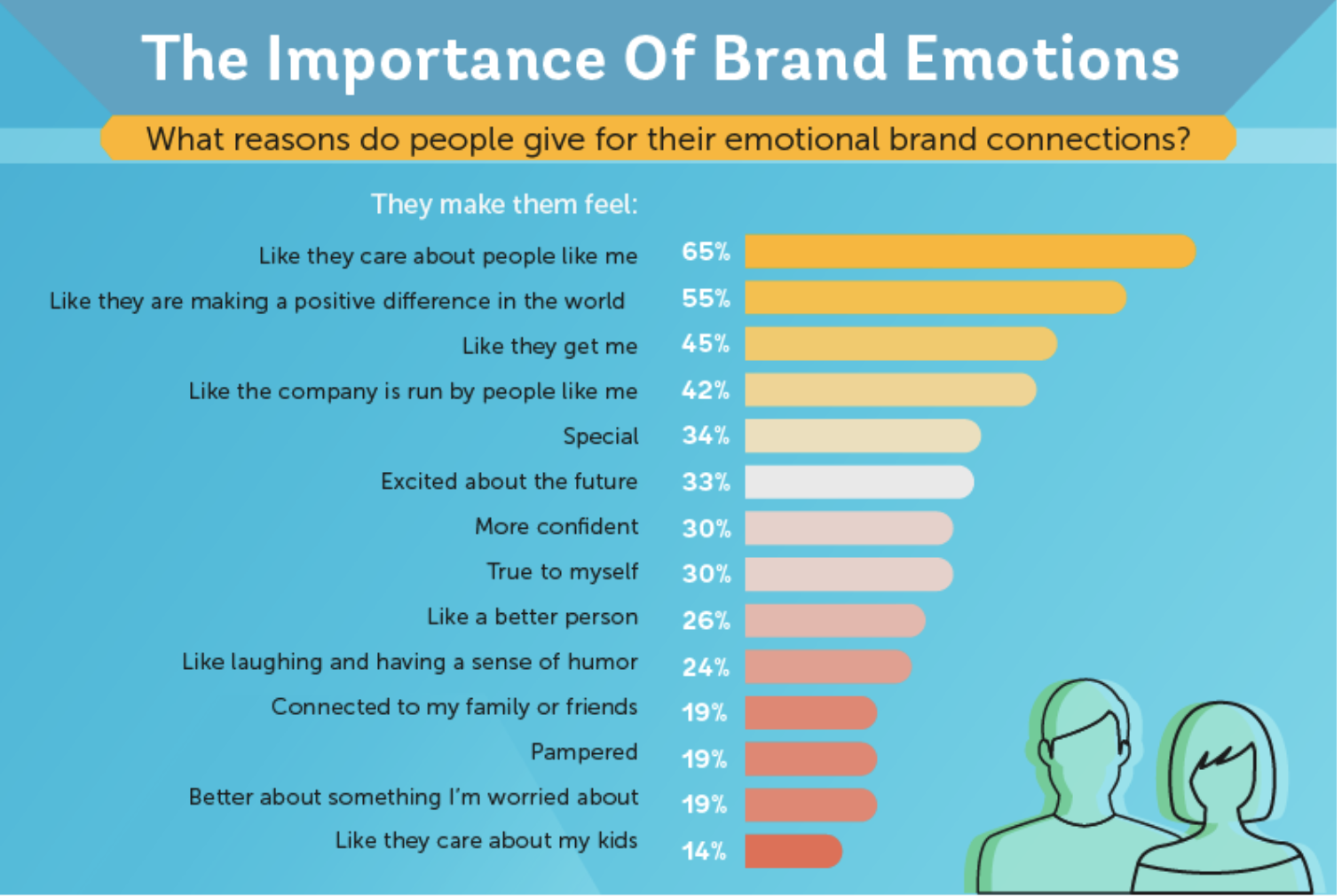
Celebrating a milestone with your customers is a fun way to show that you care.
The milestones you celebrate could be personal to your relationship, such as the one-year anniversary of their custom. Or it could be personal to the customer, e.g. their birthday:
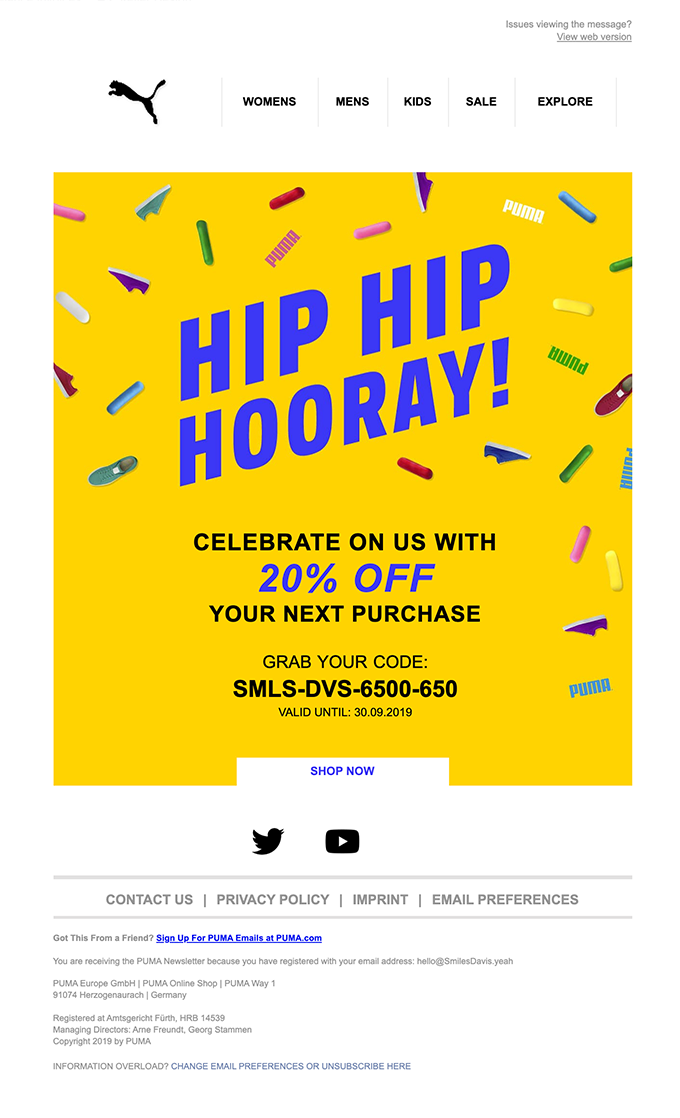
Follow Puma’s example by gifting subscribers a discount or offer. It’s another opportunity to surprise and delight the customer.
Alternatively, you can celebrate a product-related milestone with the customer.
Here’s an example from Withings, a company that makes smartwatches equipped with activity trackers:
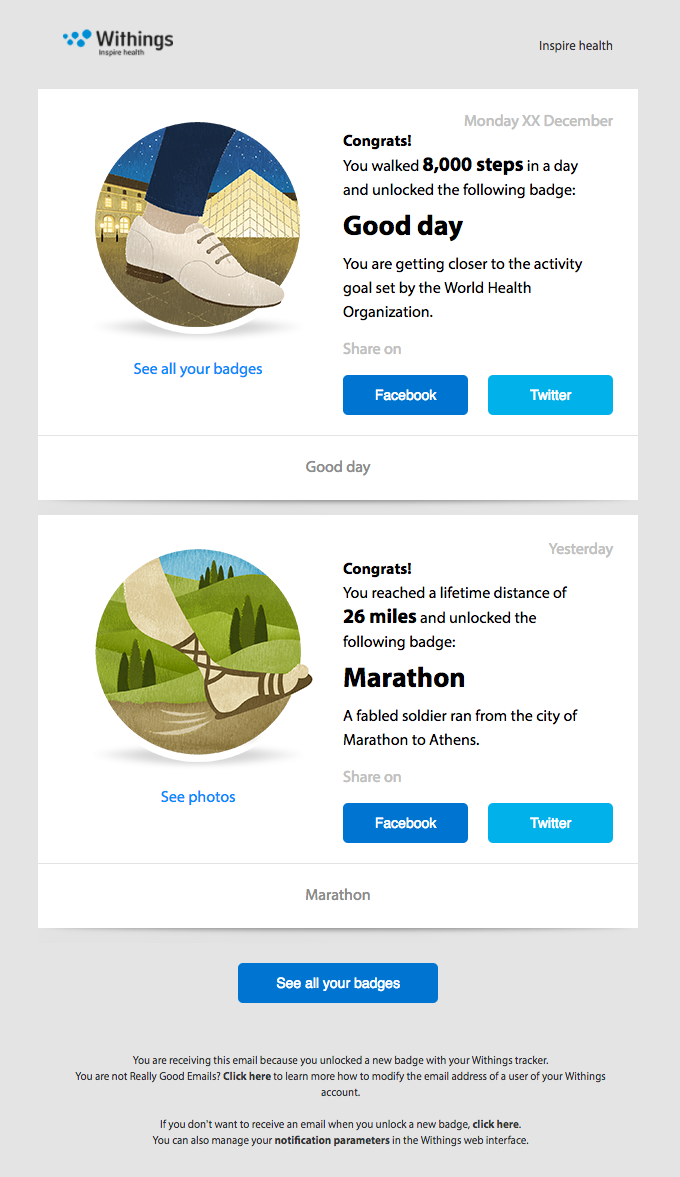
As you can see, customers earn badges after completing a certain number of steps. This encourages customers to keep using the product to reach more achievements.
If you have a digital product, such as an app or piece of software, you can do something similar. Set up automated emails, triggered by key milestones.
It could even lead to the user becoming a product evangelist as reaching goals becomes part of their routine. Plus, sharing their achievements with others carries social gravitas.
4. Treat Email Subscribers Like VIPs
It’s important to reward customers for their loyalty to your company. If they feel like they’re getting something special out of the relationship, they’re more likely to continue that relationship.
It can’t just be a one-way street, as in you purely sending promotional emails. When there’s no benefit to the customer, they’re more likely to hit unsubscribe.
Experts say that your unsubscribe rate should be below 2%. If yours is higher, then you definitely need to make a concerted effort to keep people on your list.
One way to treat your subscribers like a VIP would be to invite them to special events, such as webinars.
Here’s a fantastic example from Squarespace:

They not only make the customer feel special but they also make them feel supported by the line, “Squarespace is here for you.”
Go the extra mile and show your customers that you are different from other brands. If they stick with you, you’ll make certain that they get the most from your products.
Another option would be to treat subscribers to early or exclusive deals.
Take a look at this example from Google:

This creates a feeling of being part of a special club that gets exclusive deals, thereby making the subscription worthwhile.
Essentially, you have to prove to customers that the relationship is give and take.
5. Resonate With Your Audience
Customers don’t want emails that sound as though they come from a marketing robot. They want to build genuine connections with brands they feel they can relate to.
The qualities customers most want to see from brands are trustworthiness, creativeness, intelligence, authenticity, and confidence:
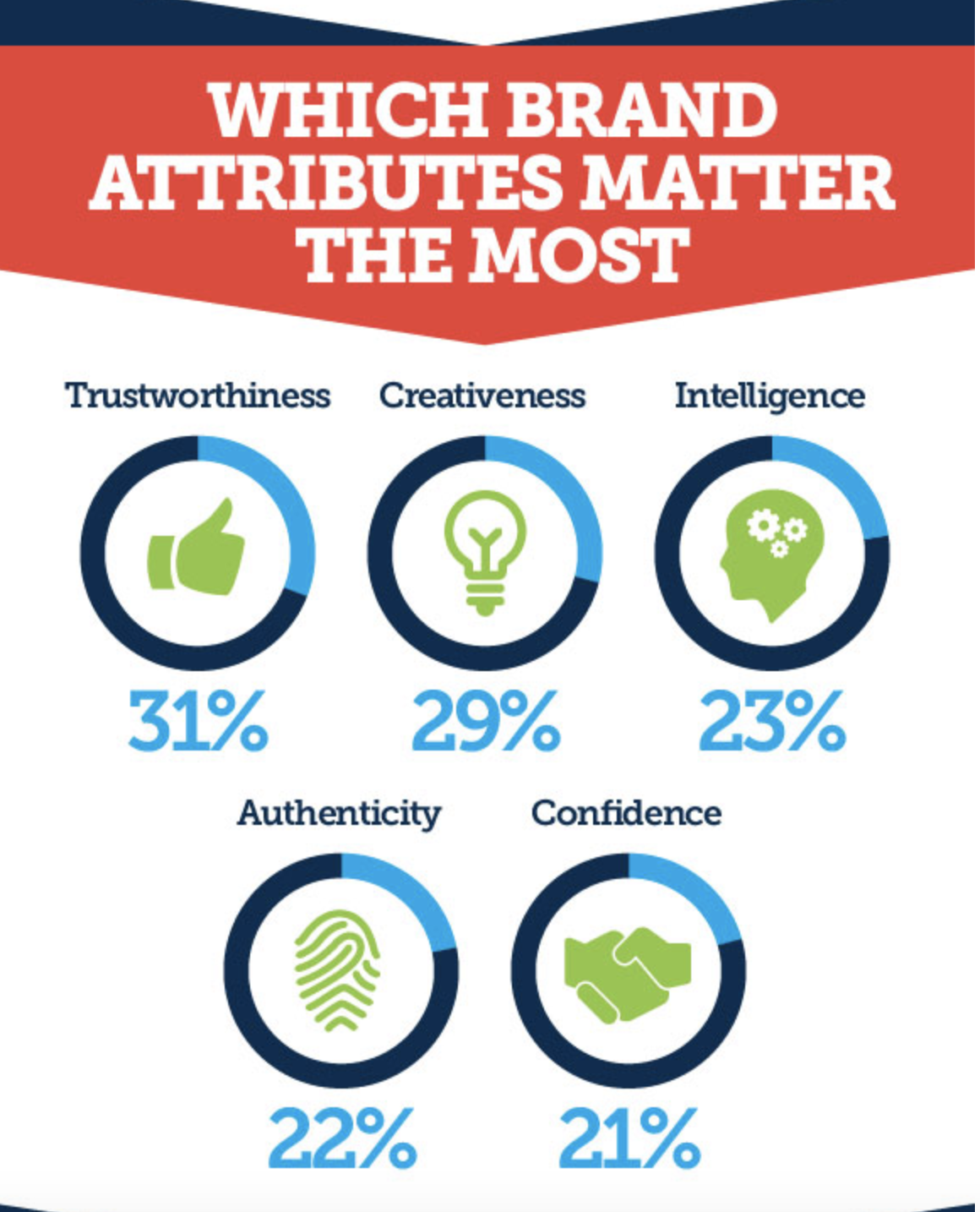
So, you have to think carefully about the tone of your emails. Create emails that resonate with your audience and that they actually want to read.
Consider the values and personality you want to express as a brand. Here’s a framework from which to take inspiration:
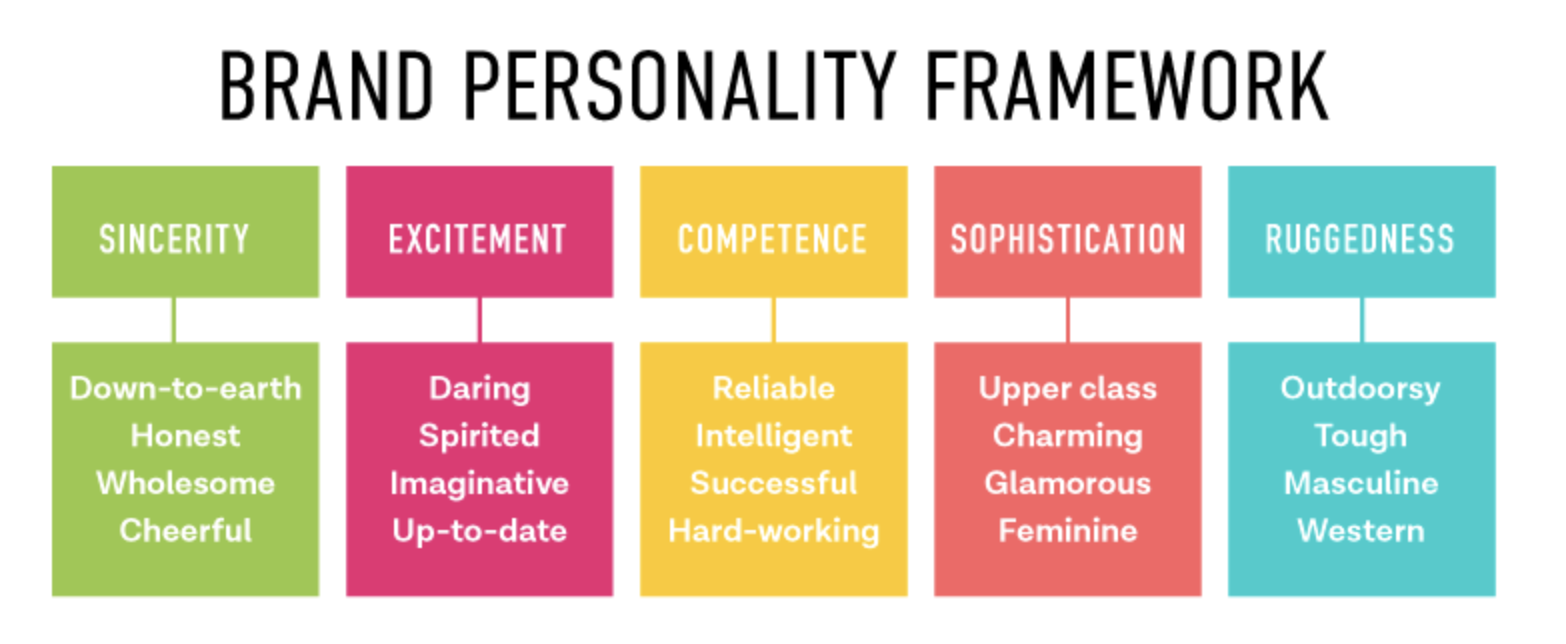
Then take a deep dive into the kind of content your audience shares, the way they interact and the language they use. The best places to find this information are forums and social media.
Make sure your emails reflect your brand personality and the way in which your audience communicates. This includes the copy you use, the content you share, imagery and whether that includes gifs, memes and so on.
Flywheel does a great job of expressing their personality:

The image and language used are down-to-earth and approachable. They also use emojis which further shows their casual approach.
Remember that this is just an example. Above all, you should communicate in a way that’s true to your brand and relatable to your audience.
6. Provide Value
Nowadays, customer experience extends beyond supplying a great product or service. Customers appreciate when you anticipate their needs and go out of your way to help them. It’s the icing on the cake.
One way to achieve this is through personalized recommendations. Go too far and it’s creepier than spotting Pennywise through your bedroom window.
But get it right and you provide customers a lot of value. Because many actually want personalized recommendations—64% of global consumers say there’s too much choice online.
Here’s a nice example from OpenTable:
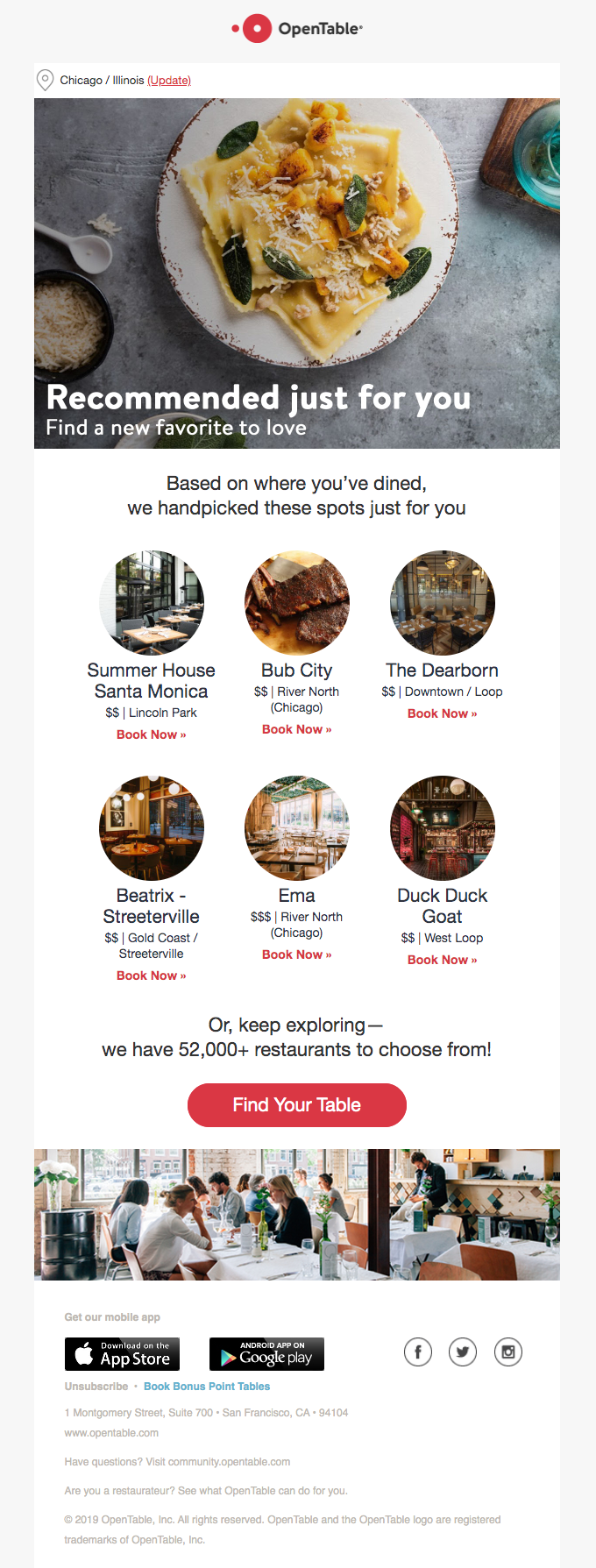
Note where they say, “Based on where you’ve dined, we handpicked these spots just for you.” Because they explain where the recommendations come from, it’s less creepy.
The point is, as long as you’re transparent in your recommendations, customers will be grateful.
Another way to provide value is to share useful content. You’re not just trying to sell to customers, you’re giving them something that’s genuinely helpful.
To do this, share a useful resource.
Take a look at this example from Burrow:
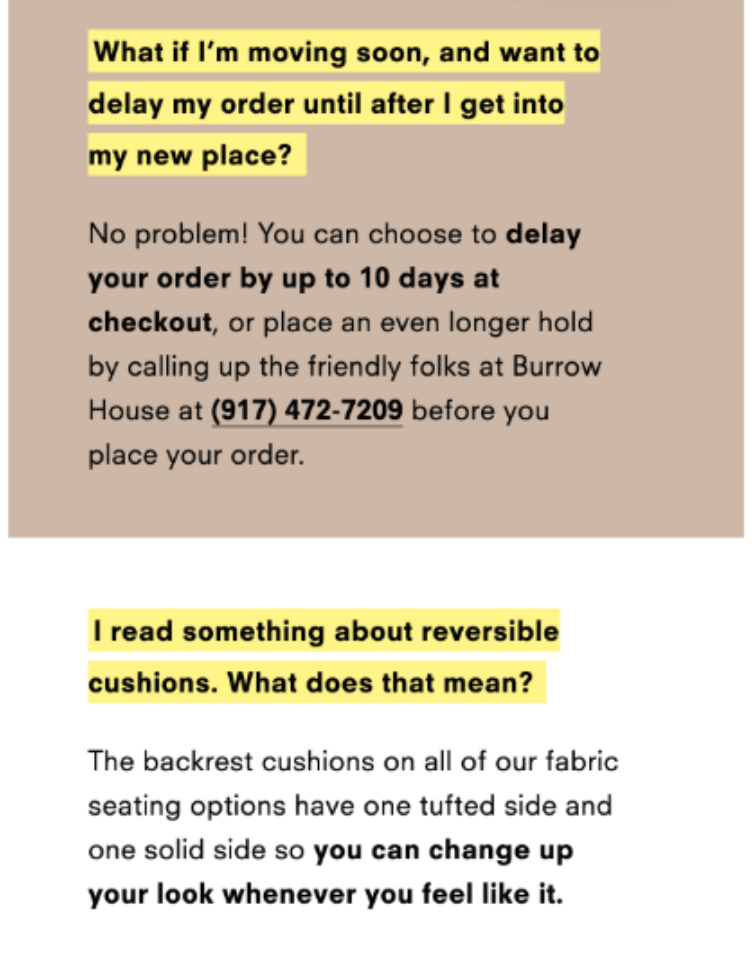
In the email, they answer a list of FAQs. This is a prime example of anticipating user needs and providing resolutions.
Alternatively, serve up some actionable content. Give the recipient information or advice that they can take away and apply in real life.
Show that your relationship has value beyond commercial interactions.
7. Keep It Simple
Boosting customer relationships isn’t just about customer experience. You also need to create a great user experience.
What’s the difference?
Well, customer experience refers to their journey and interactions with your brand. User experience is a part of the customer experience. But it’s more about the technical side of things, i.e. their experience with your product and website.
Here’s a handy diagram:
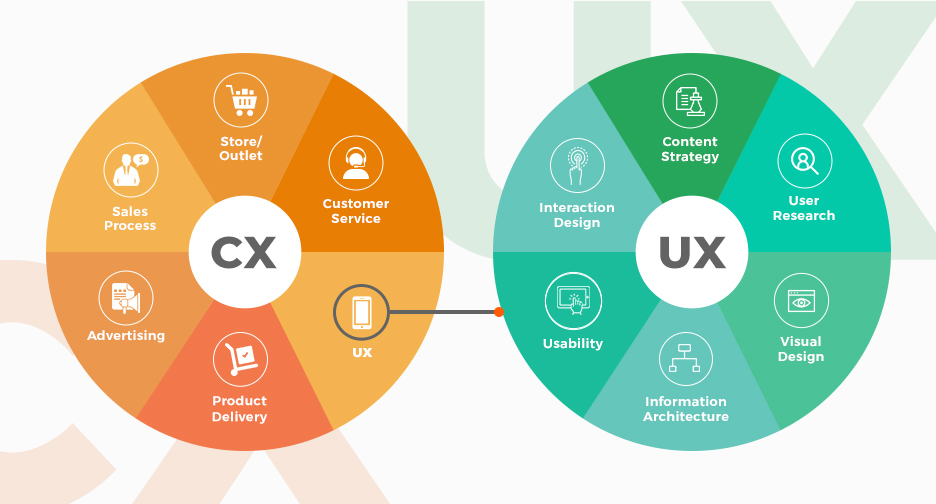
UX is a big topic. But when it comes to email, one of the most important principles to remember is to keep it simple.
Customers appreciate it when you make their lives easy. Users may not notice that you’re making things easy for them. They will undoubtedly notice, however, if you’re making things hard.
The first thing to do is to provide bright shiny buttons for users to tap or click. They’re easier to spot and easier to use than text links. What’s more, the button should take the user directly to the relevant page.
Let’s say, you showcase your new T-shirt line in your email. The button should take users to the category page for your new tees, as opposed to a generic “Shop Now” button that takes them to your homepage.
Also, embed interactive elements such as media, signup forms and so on, directly within the email. Users don’t want to visit multiple pages to engage with your email.
Here’s a brilliant example:
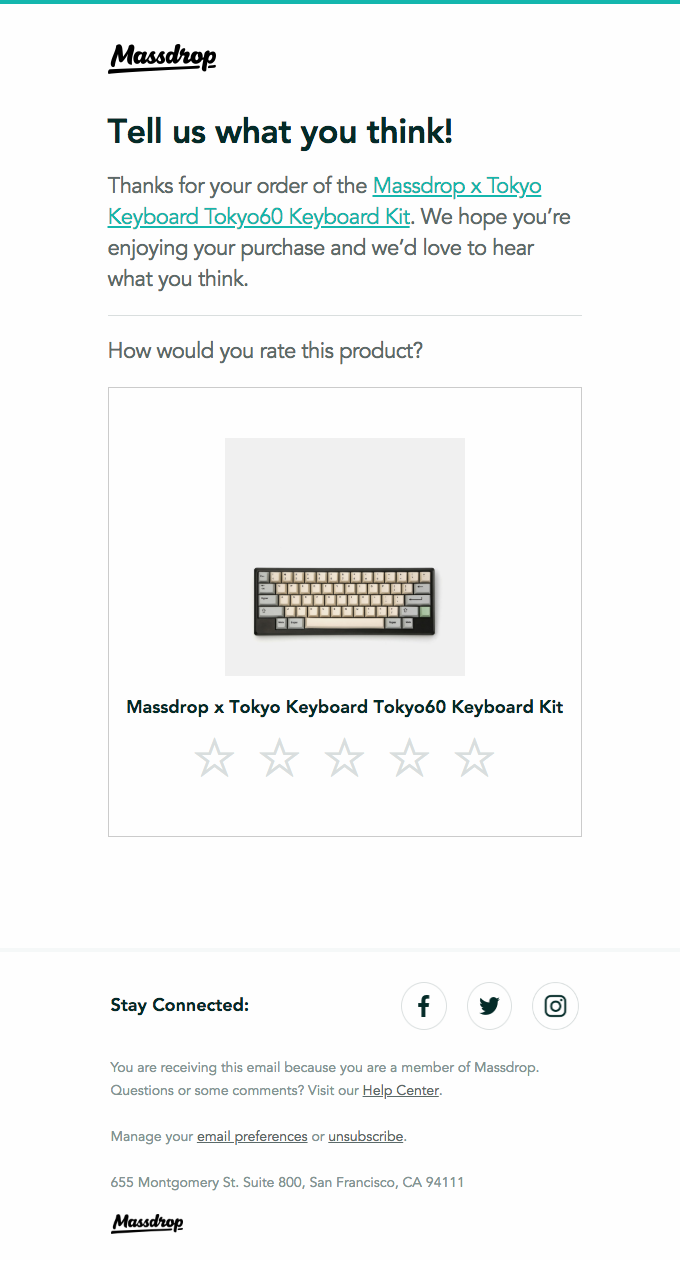
It’s common to ask for customer testimonials or reviews via email. But in this case, Massdrop makes it so simple for customers to do so. They simply have to click the star-rating within the email, not head to another page, input their details, then review the product and blah, blah, blah. That would be too much effort.
It helps to put yourself in your customer’s shoes and imagine their journey as they interact with the email. Always think, how can I make this even easier?
Conclusion
If you want your brand to thrive, you need to form more meaningful relationships with customers. Email continues to be an important medium through which you can do just that.
Boosting customer relationships through email comes down to a few major points:
- Share content that’s personal, relevant and useful.
- Exceed customer expectations and delight them with extras.
- Communicate in a way that customers can relate to.
- Make life easier for them.
Do this on a regular basis and you will not only retain customers but create loyal, satisfied and happy customers.
Now it’s over to you to spread some joy through your email communications. The first step is gaining a thorough understanding of your audience’s tastes, needs, and habits.

